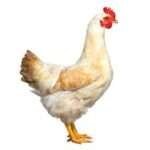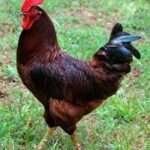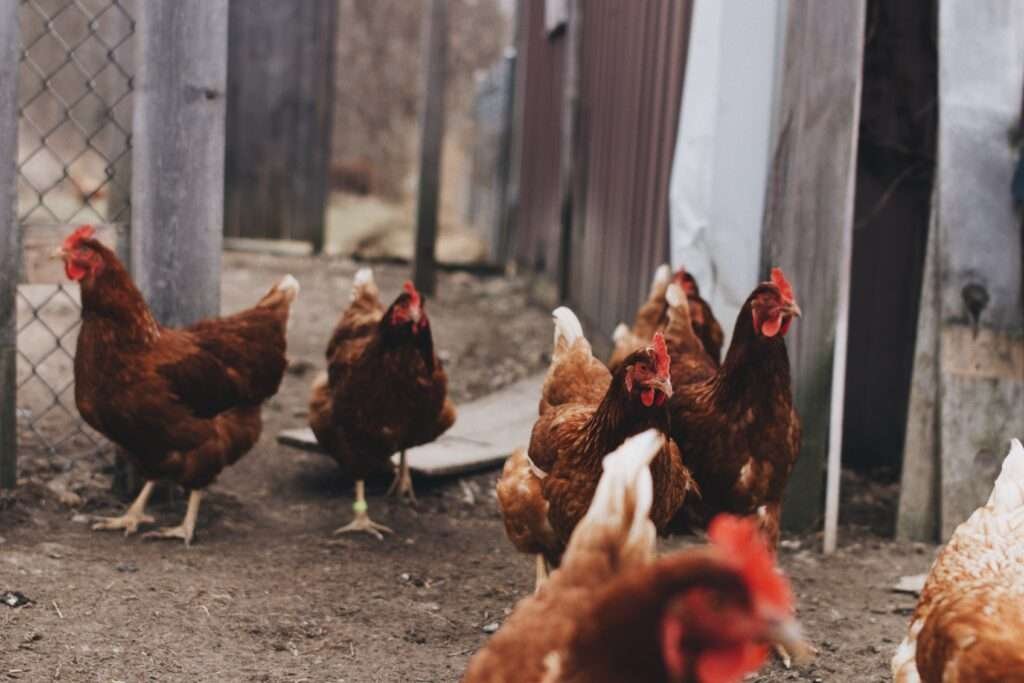
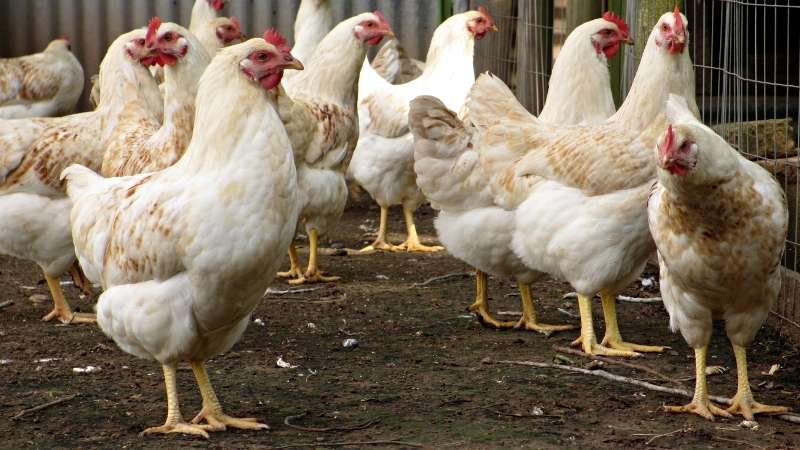
Choosing the right chicken breed to welcome into your backyard flock is a decision that merits careful consideration. Among the myriad of chicken breeds available, two contenders have been making waves in the poultry world: Amberlink and Rhode Island Red. Each possesses its unique set of characteristics, temperament, and attributes that appeal to poultry enthusiasts. In this comprehensive comparison, we’ll dissect these breeds to help you determine which one is the perfect addition to your feathered family.
Breed Characteristics
When it comes to selecting a chicken breed, it’s essential to begin with an understanding of their physical traits and characteristics. The differences in size, appearance, plumage, and other breed-specific features can influence your choice and align with your preferences and goals.
Amberlink
Amberlink chickens are known for their striking appearance and medium-sized build. They typically feature amber-colored feathers that vary in shades, giving them their name. Amberlinks are robust and well-proportioned birds, making them a visually appealing addition to any flock.
One notable characteristic of Amberlink chickens is their sex-linked coloration, making it relatively easy to distinguish between males and females from a young age. This feature can be advantageous for those seeking a specific gender mix in their flock.
Rhode Island Red
Rhode Island Reds, on the other hand, are recognized for their sturdy and medium to large build. Their plumage exhibits rich mahogany or deep reddish-brown coloration, giving them a classic and iconic appearance. The Rhode Island Red’s single comb and bright red wattles and earlobes further contribute to their distinctive look.
Compared to Amberlinks, Rhode Island Reds tend to be slightly larger in size. Their robust build and deep chest reflect their dual-purpose nature, which we will delve into later in this comparison.
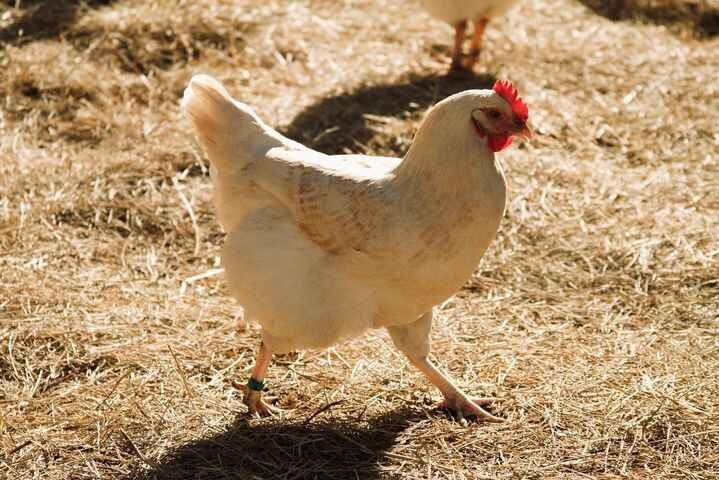
Comparing Color Variations and Unique Breed Traits
Beyond their general appearance, both Amberlink and Rhode Island Red chickens exhibit unique breed traits and variations that cater to specific preferences and goals. For example, Amberlink hens are favored for their exceptional egg-laying abilities, while Rhode Island Reds are renowned for their dual-purpose nature, excelling in both egg and meat production.
As you consider which breed aligns with your aesthetic preferences and overall flock objectives, it’s essential to delve deeper into these unique characteristics and traits. This in-depth understanding will serve as a foundation for your decision-making process, helping you choose the breed that best suits your poultry-keeping aspirations.
In the following sections, we will explore other critical aspects of these breeds, including their temperament, egg production, health considerations, feeding requirements, availability in the market, and ultimately, offer guidance on selecting the ideal breed for your specific circumstances. The journey to choosing the perfect backyard chicken begins with understanding how Amberlink and Rhode Island Red chickens compare across these essential criteria.
Temperament and Behavior
The temperament and behavior of your chosen chicken breed can significantly impact your overall poultry-keeping experience. Amberlink and Rhode Island Red chickens, while both amiable and sociable, exhibit distinct personality traits that may align differently with your flock dynamics and handling preferences.
Amberlink
Amberlink chickens are known for their friendly and docile disposition. They tend to be amicable, making them an excellent choice for families, including children. These birds often enjoy human interaction and can become quite sociable with their caretakers.
Amberlinks are relatively easygoing and adapt well to various flock structures. They tend to be less aggressive within the pecking order, which can contribute to a harmonious coop environment. If you’re seeking chickens that are approachable, gentle, and suitable for an engaging backyard experience, Amberlinks may be a fitting choice.
Rhode Island Red
Rhode Island Reds also boast a friendly temperament, but they tend to exhibit a bit more independence and assertiveness compared to Amberlinks. While they can be personable and enjoy interaction with their human companions, Rhode Island Reds may have a slightly more assertive presence within the flock’s social hierarchy.
Their confident nature can translate into effective foraging and resourcefulness, making them well-suited for free-range environments. Rhode Island Reds are known for their adaptability and resilience, which aligns with their historic role as hardworking farm chickens.
When considering temperament, it’s essential to think about how these traits will fit into your overall flock dynamics and the level of interaction you desire with your chickens. Amberlinks offer a gentle and sociable experience, while Rhode Island Reds bring a touch of assertiveness and independence to your flock.
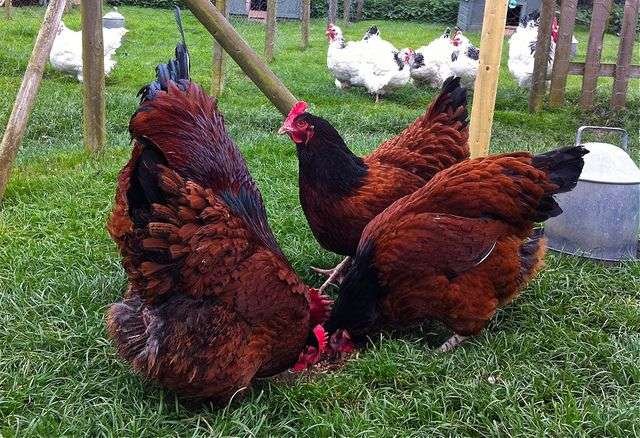
Egg Production and Quality
Egg production is often a primary consideration for chicken keepers, whether you’re looking to have a steady supply of fresh eggs for your family or potentially sell surplus eggs to others. Both Amberlink and Rhode Island Red chickens are strong contenders in this category, but there are differences to explore.
Amberlink
Amberlinks are renowned for their prolific egg-laying capabilities. Hens of this breed consistently produce a high number of large brown eggs throughout the year. Their exceptional egg production rates make them a top choice for those seeking a reliable source of fresh eggs.
The average egg production for Amberlinks typically ranges from 300 to 320 eggs per year, making them among the most productive layers in the poultry world. If you prioritize egg production and desire a breed that can deliver a substantial number of eggs, Amberlinks are hard to beat.
Rhode Island Red
Rhode Island Reds are no slouch when it comes to egg production, either. While they may not match the prolific output of Amberlinks, they still perform admirably, laying an average of 200 to 300 large brown eggs annually. This level of production places them among the top layers in their own right.
In terms of egg quality, both breeds offer eggs with excellent flavor and texture, making them highly suitable for culinary use. Rhode Island Red eggs tend to have sturdy shells, which can be an advantage for backyard keepers concerned about egg breakage.
As you weigh your options, consider your specific egg production requirements and whether the prolific nature of Amberlinks or the reliable output of Rhode Island Reds better suits your needs.
In the following sections, we’ll delve deeper into health considerations, feeding requirements, availability in the market, and provide guidance on making the ultimate decision between Amberlink and Rhode Island Red chickens for your backyard flock. This comprehensive comparison will empower you to select the breed that aligns best with your goals and preferences, ensuring a rewarding chicken-keeping experience.
Health and Longevity
Ensuring the well-being and longevity of your chickens is paramount to a successful and enjoyable poultry-keeping venture. Both Amberlink and Rhode Island Red chickens exhibit strengths in these areas, but there are some differences to consider.
Amberlink
Amberlink chickens are generally healthy and resilient birds. They have a reputation for robustness and the ability to adapt to various environmental conditions. This adaptability contributes to their longevity and overall well-being.
However, like all chickens, they can be susceptible to common poultry ailments such as respiratory infections or parasites. Regular health checks, preventive measures, and proper coop management are essential to keeping your Amberlink flock in good health.
Rhode Island Red
Rhode Island Reds are known for their hardiness and ability to thrive in diverse climates. Their resilience to environmental stressors, coupled with their sturdy build, often results in long and productive lives. With attentive care, Rhode Island Reds can continue to lay eggs and contribute to your flock for several years.
As with any chicken breed, monitoring their health and implementing proactive health management practices are crucial to ensuring their longevity. Regular health checks and proper hygiene in the coop and run will contribute to the overall health and well-being of your Rhode Island Reds.
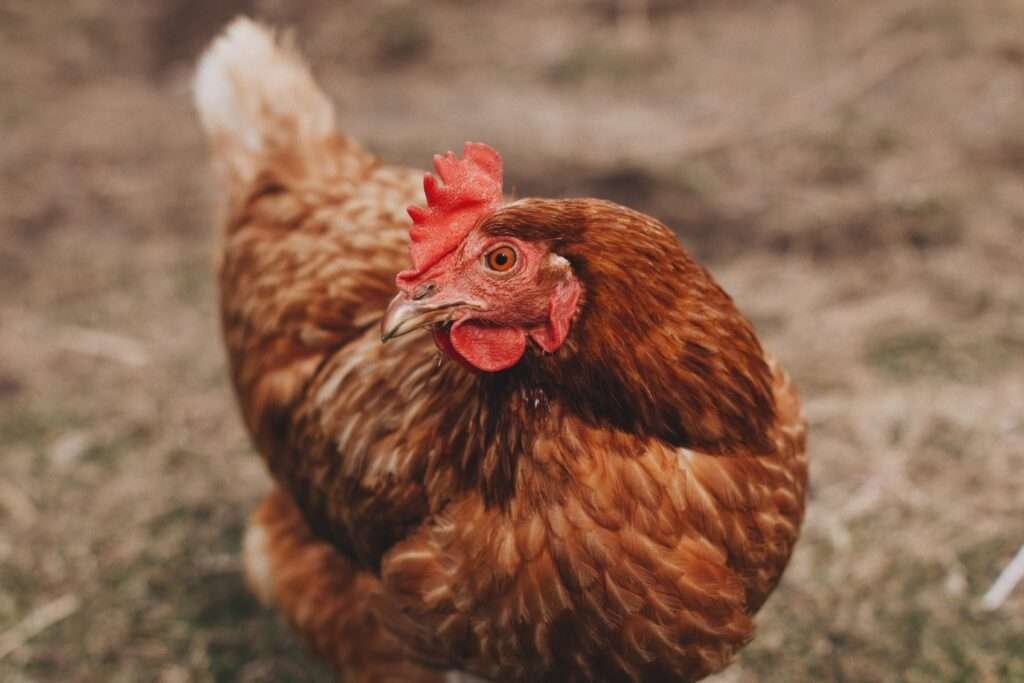
Feeding and Nutritional Needs
Meeting the dietary requirements of your chosen chicken breed is essential for their health, vitality, and egg production. Amberlink and Rhode Island Red chickens have their preferences and nutritional needs.
Amberlink
Amberlinks are known for their efficient feed conversion, making them relatively economical to feed. They thrive on a balanced diet that includes a commercial layer feed designed to meet their nutritional requirements for egg production.
In addition to commercial feed, Amberlinks appreciate supplemental treats and kitchen scraps. However, it’s essential to maintain a balanced diet to ensure their egg production remains consistent and their health is supported.
Rhode Island Red
Rhode Island Reds also benefit from a balanced diet, often consisting of a high-quality layer feed. Their slightly larger size may result in slightly higher feed consumption compared to Amberlinks. It’s crucial to monitor their condition and adjust their diet as needed to maintain optimal health and egg production.
As with Amberlinks, Rhode Island Reds enjoy occasional treats and foraging opportunities, which can contribute to their overall happiness and well-being. However, maintaining a proper diet remains essential for their health and productivity.
Availability and Sourcing
The ease of obtaining your chosen chicken breed is a practical consideration, as it can affect your ability to start or expand your flock. Both Amberlink and Rhode Island Red chickens are accessible, but availability may vary based on your location and sourcing preferences.
Amberlink
Amberlink chickens have become increasingly popular in recent years, and as a result, they are often readily available at local hatcheries, feed stores, and through online sources. Their accessibility makes them a viable choice for chicken keepers seeking this breed.
Rhode Island Red
Rhode Island Reds have a long-standing reputation and a strong presence in the poultry world. They are widely available in many regions, making them a reliable choice for chicken enthusiasts. Local hatcheries, feed stores, and online marketplaces often carry Rhode Island Red chicks or pullets.
Consider the availability of each breed in your area when making your decision, as the ability to obtain your chosen chickens conveniently can impact your overall poultry-keeping experience.

The Ultimate Decision: Amberlink or Rhode Island Red?
As you weigh the factors discussed in this comprehensive comparison, it’s essential to consider your individual preferences, goals, and resources. There is no one-size-fits-all answer, and the ideal breed for your flock will depend on your unique circumstances.
Amberlink chickens excel in prolific egg production, docile temperament, and efficient feed conversion. They are an excellent choice for those seeking a consistent supply of fresh eggs and a friendly backyard experience.
Rhode Island Red chickens bring a robust and versatile presence to your flock, with reliable egg production, resilience, and adaptability. They are a classic breed that continues to be favored by chicken keepers for their dual-purpose capabilities.
In making your decision, think about what aspects align most closely with your poultry-keeping goals. Consider factors such as the number of eggs you desire, your space and coop setup, the temperament you prefer, and your ability to source your chosen breed.
Ultimately, the choice between Amberlink and Rhode Island Red chickens is a personal one. Both breeds offer their unique advantages and have their place in the world of backyard poultry. Whether you decide to embrace the prolific layers or the classic dual-purpose birds, your journey with these wonderful chickens will be filled with the joys of fresh eggs, companionship, and a rewarding connection to nature.
Additional Resources and References
For further insights and guidance on raising Amberlink and Rhode Island Red chickens, consider exploring reputable poultry books, online forums, and local poultry associations. Engaging with experienced chicken keepers and accessing educational resources will provide you with valuable information to enhance your success and enjoyment in raising these exceptional breeds. As you embark on your journey with Amberlink or Rhode Island Red chickens, remember that your choice is the first step toward a fulfilling and rewarding poultry-keeping experience.

